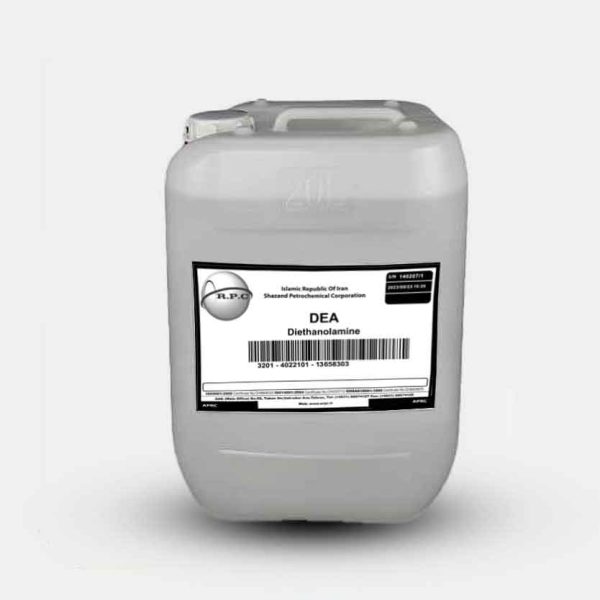About Diethanolamine DEA 98%
DIETHANOLAMINE obtained from the reaction between ammonia and ethylene oxide. DIETHANOLAMINE, have a low volatility at room temperature, is hygroscopic, presents an ammoniac odor and can appear in solid or liquid form depending on the temperature and the purity grade.
Detergents:DIETHANOLAMINE is recommended as components in detergent formulations for laundry and dishwashing, degreasers, multiple use detergents and disinfectants. DIETHANOLAMINE can also be used as neutralizer agent in formulations of car wash shampoos, degreasers in general, wax removers and as corrosion inhibitors.
Agrochemicals:DIETHANOLAMINE is used as neutralizer agents for anionic emulsifiers. DIETHANOLAMINE can be used in the preparation of agricultural compounds obtained from 2,4D acid (2, 4 dichloro phenoxiacacetic) and DIETHANOLAMINE can be used in the synthesis of glyphosate.
Treatment of gases:Ethanolamines can be used to treat natural gas and petroleum residual gas in the absorption of carbon dioxide. DIETHANOLAMINE is recommended for the treatment of vapors with a high content of hydrogen sulfide.
Other uses:DIETHANOLAMINE is recommended as synthesis intermediate for the manufacture of corresponding alkanolamides due to its reaction with fatty acid or coconut oil. As a consequence of its properties, this product can be used in various industrial segments such as detergents, lubricant oils, products for hygiene and personal care, flotation of minerals, etc. products, dispersing agents for glues, gums, latex and photographic developers, accelerators of rubber vulcanization, corrosion inhibitors, pH controllers, synthesis intermediates, lacquer, paint, wax and polisher wetting agents, polymerizing agents and catalysts for polyurethane resins.
Storage conditions:Since this product is hygroscopic we recommend provide the tanks with an inert atmosphere such as of nitrogen to reduce the absorption of water and to avoid darkening through contact with the air. We recommend storing DIETHANOLAMINE, by bulk in stainless steel 316 or 304 tanks, equipped with a water or vapor heating coil to maintain the products at a temperature above their solidification point. Storage in carbon steel tanks without covering can compromise the color of the product, which becomes yellow as a result of iron contamination. Tanks coated with epoxy resin reinforced with fiberglass can be corroded as a result of the alkalinity of the amine.
Packing:Bulk or in 220 Lit (net: 220 Kg) new drums, each 4 drums strapped on a pallet.











No comment